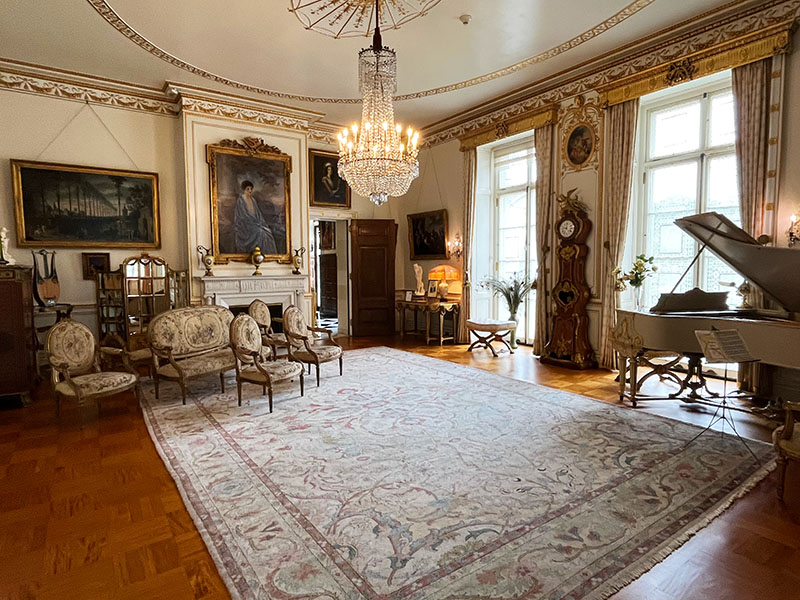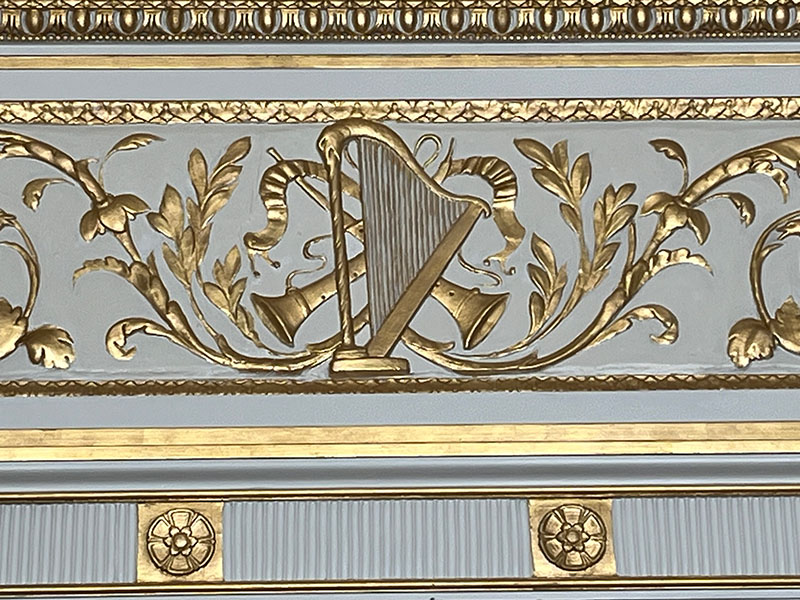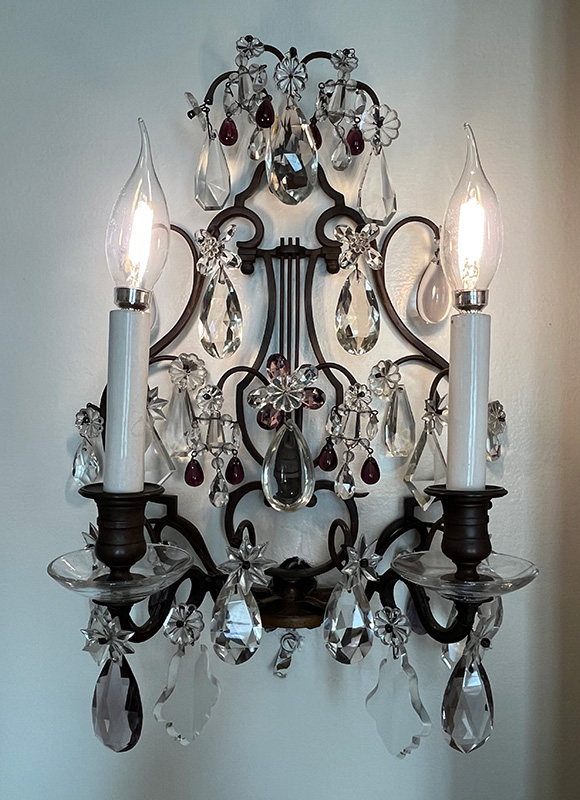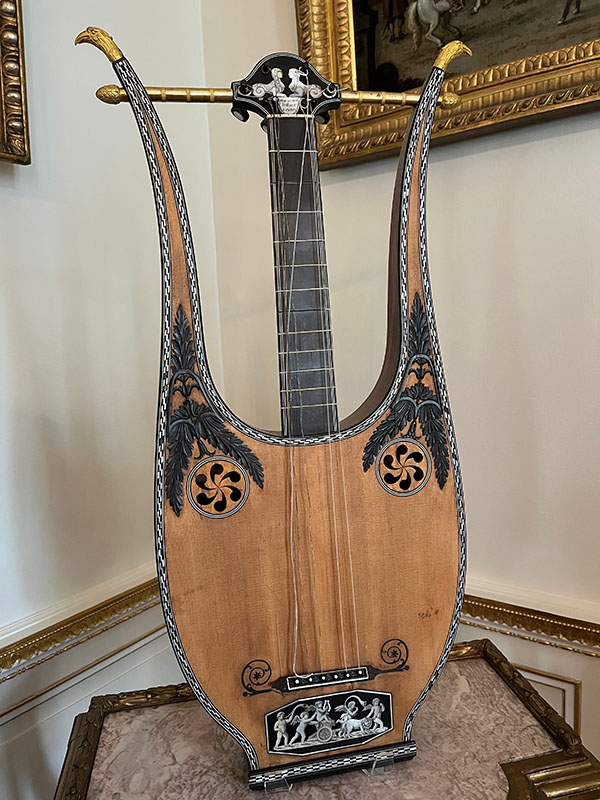Making Music at Nemours: Alfred I. duPont’s Music Room at his Delaware Mansion
Click on images to enlarge them and view captions.
by Paula Phipps
Just before Christmas 1910, Alfred I. duPont, his wife Alicia, and stepdaughter “little Alicia” moved onto their newly completed, French-inspired estate they called Nemours. Large and elegant, but not ostentatious, the home reflected many of Alfred’s interests as well as Alicia’s refined tastes. The 47,000-square-foot mansion was designed by the renowned New York City firm Carrère and Hastings, with much input from Alfred, and provided all the modern luxuries for the family and their formal and informal entertaining.
Alfred was a proud powderman and part owner of the family business, E.I. duPont de Nemours & Company, a responsibility he lived and breathed. But he was also a passionate musician, composer, and conductor. He played multiple instruments, preferring the violin. With a group of musicians from the powder yards and extended family, he created the Tankopanikan Musical Club, which frequently performed during local concerts and events. It would eventually develop into the Delaware Symphony Orchestra.
With such a love for music, he included a music room in his new home. Unfortunately, Alfred was almost completely deaf by the time he moved into Nemours1 and consequently, he probably did not spend a lot of time in this space. It likely caused him great pain to no longer be able to participate and enjoy the music he so loved. He was reported to have said, “If I could get my ears back for three hours, I’d spend two of them playing the violin.” His stepdaughter did, however, spend a great amount of time playing the piano in the Music Room, which undoubtedly pleased him.
Decorative Arts Trust members enjoyed a visit to Nemours Estate during the Spring 2025 Symposium, and the Music Room was a special highlight (figure 1). The instruments on display make the purpose of the room clear, but so does the interior design. Instruments are found in the carved plaster (figure 2) and in the needlework covering the French Neoclassical chairs (figure 1). Even the sconces include lyres (figure 3). Although featuring a creamy off-white paint with gilded highlights, the Music Room was painted an avocado green until the 1920s, as was the 1905 Model B mahogany Steinway grand piano. Purchased in 1908, the piano is the star of the room. Its Louis XVI-style tapered legs, ornate urn and scroll design, and T-shaped stretchers with swags enhance the elegance of the interior.
Tucked in a corner is a late-18th-century lyre guitar signed “Mareschal Luthier à Paris” (figure 4), which was found in dismal condition in 1989. Conservators with the Winterthur/University of Delaware Program in Art Conservation restored it to its original beauty in 1995. The lyre guitar, invented by Pierre-Charles Mareschal, was a popular instrument in early-19th-century France, as it harkened back to the ancient world.2 The body of the Nemours piece is comprised of spruce and Brazilian rosewood, with Classical decorative elements made of ormolu, ebony, and mother-of-pearl. A scene of cherubs playing a lyre while riding a chariot drawn by a lion is carved in mother-of-pearl and set into ebony. These objects were often referred to as “furniture instruments” because they were meant to be displayed when not in use.
Visitors can enjoy this room throughout the year, but during the holidays it truly comes alive. Musicians and music students of various instruments perform for visitors, and the piano is played regularly allowing the room to fulfill its purpose: to provide joy to musicians and music lovers alike.
- Alfred was not born deaf; the cause was a congenital issue that meant he would gradually lose his hearing over time. Over the years, he tried a variety of treatments, all to no avail. See Wall, Joseph Frazier, Alfred I. du Pont: The Man and His Family, New York, Oxford: Oxford University Press, 1990, 240.
- In addition to this example, there appear to be only two other extant Mareschal lyre guitars, one in the Brussels Conservatory collection and one in the Helsingborg, Sweden, Stadsmuseum. See Blanchfield, David B. “The Research and Treatment of a Late 18th Century Lyre Guitar: A Collaborative Effort.” WAG Postprints, 1996.
Paula Phipps is the Manager of Collections and Special Interpretive Projects at Nemours Estate.
A print version of this article was published in The Magazine of the Decorative Arts Trust, one of our most popular member benefits. Join today!




